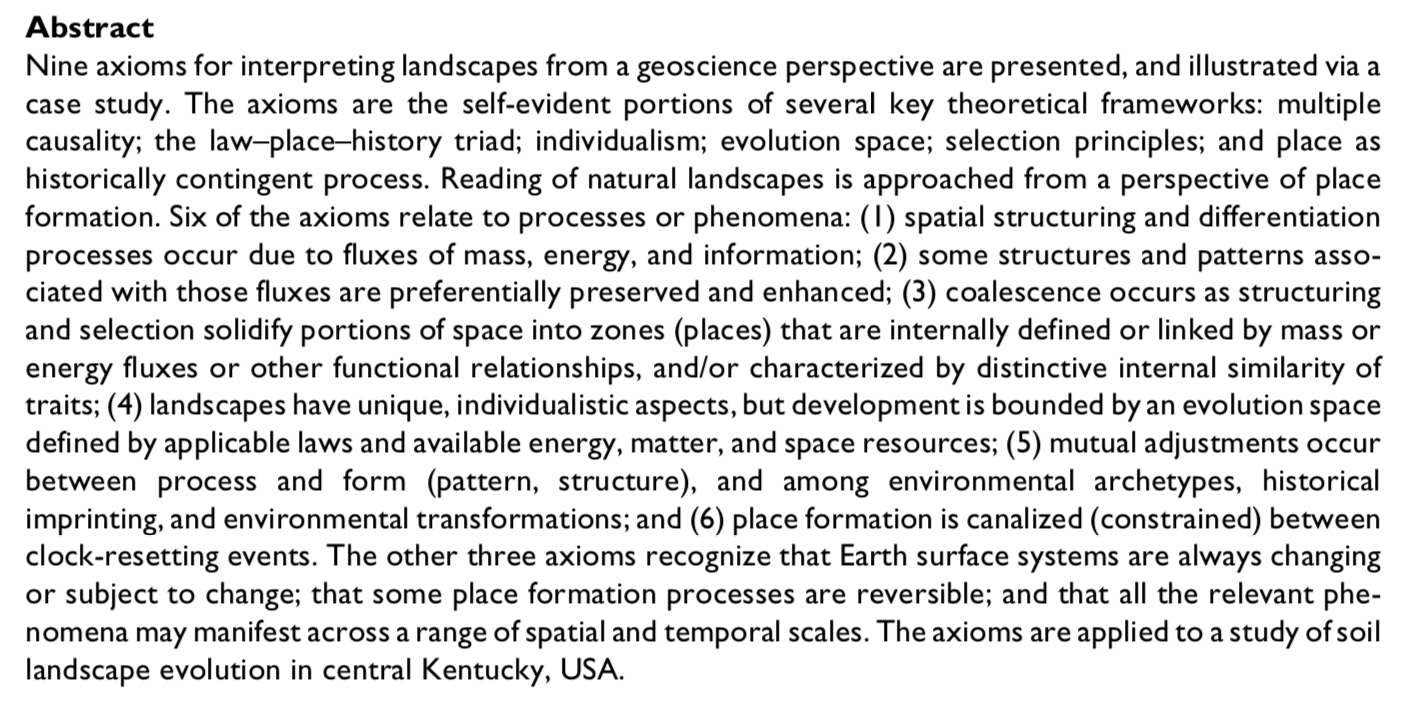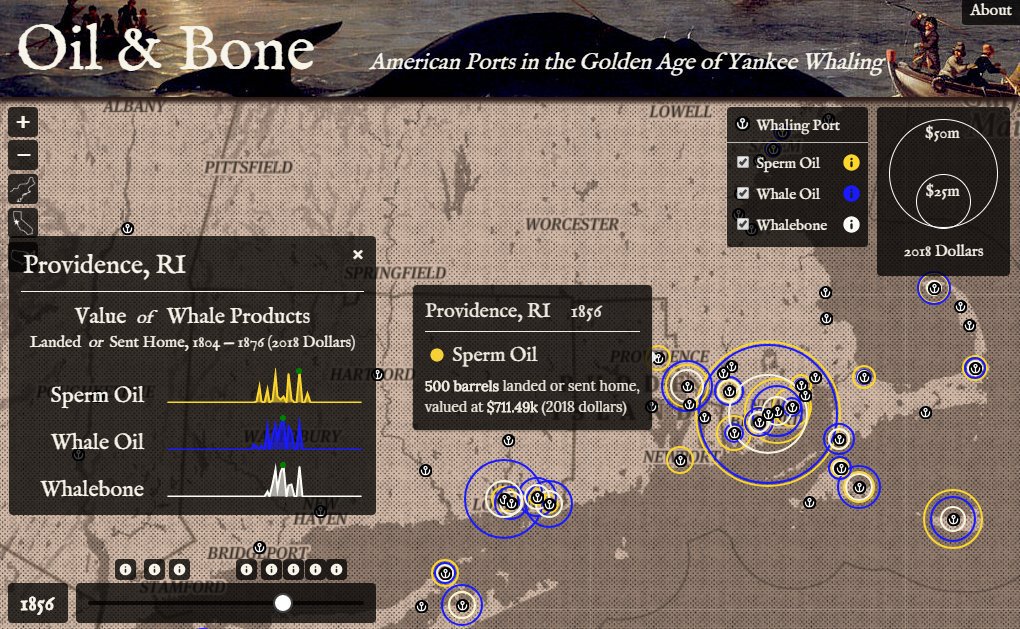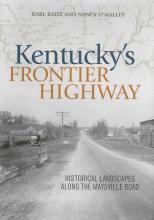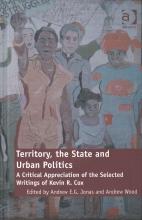Career Night " Learn How a Geography Degree Becomes a Career"
Join a panel of alumni and local professionals for a night dedicated to kick starting your career. This night includes resume help, professional headshots, and free food.
AXIOMS FOR READING THE LANDSCAPE
Just published in Progress in Physical Geography: Place Formation and Axioms for Reading the Natural Landscape. This work is an attempt to develop some formalisms for analyzing the biophysical landscape from the perspective of place formation--how landscapes, environments, and places evolve and become different from each other. My original efforts were in the form of conceptual model, but (thanks in large measure to reviewers and critiques of earlier versions) I realized that (A) the critical principles could be reduced to axioms, and (B) a set of guidelines or axioms is a more effective (and honest) way to present the approach. The abstract is below:

A copy of the full text is attached.
New Maps Plus Student Wins National Cartography Award
By Madison Dyment

Kerry Gathers’ map detailed the economic impact of the whaling industry throughout the 19th century.
Social Change in a Material World

Social Change in a Material World offers a new, practice theoretical account of social change and its explanation. Extending the author’s earlier account of social life, and drawing on general ideas about events, processes, and change, the book conceptualizes social changes as configurations of significant differences in bundles of practices and material arrangements. Illustrated with examples from the history of bourbon distillation and the formation and evolution of digitally-mediated associations in contemporary life, the book argues that chains of activity combine with material events and processes to cause social changes. The book thereby stresses the significance of the material dimension of society for the constitution, determination, and explanation of social phenomena, as well as the types of space needed to understand them. The book also challenges the explanatory significance of such key phenomena as power, dependence, relations, mechanisms, and individual behavior. As such, it will appeal to sociologists, geographers, org studies scholars, and others interested in social life and social change.
The Geography of the Internet Industry: Venture Capital, Dot-coms and Local Knowledge

This groundbreaking book analyses the geography of the commercial Internet industry. It presents the first accurate map of Internet domains in the world, by country, by region, by city, and for the United States, by neighborhood.
Demonstrates the extraordinary spatial concentration of the Internet industry.
Explains the geographic features of the high tech venture capital behind the Internet economy.
Demonstrates how venture capitalists' abilities to create and use tacit knowledge contributes to the clustering of the internet industry
Draws on in-depth interviews and field work in San Francisco Bay Area and New York City.
Kentucky's Frontier Highway: Historic Landscapes along the Maysville Road

Eighteenth-century Kentucky beckoned to hunters, surveyors, and settlers from the mid-Atlantic coast colonies as a source of game, land, and new trade opportunities. Unfortunately, the Appalachian Mountains formed a daunting barrier that left only two primary roads to this fertile Eden. The steep grades and dense forests of the Cumberland Gap rendered the Wilderness Road impassable to wagons, and the northern route extending from southeastern Pennsylvania became the first main thoroughfare to the rugged West, winding along the Ohio River and linking Maysville to Lexington in the heart of the Bluegrass.
Kentucky's Frontier Highway reveals the astounding history of the Maysville Road, a route that served as a theater of local settlement, an engine of economic development, a symbol of the national political process, and an essential part of the Underground Railroad. Authors Karl Raitz and Nancy O'Malley chart its transformation from an ancient footpath used by Native Americans and early settlers to a central highway, examining the effect that its development had on the evolution of transportation technology as well as the usage and abandonment of other thoroughfares, and illustrating how this historic road shaped the wider American landscape.
Territory, the State and Urban Politics: A critical Appreciation of the Selected Writings of Kevin R. Cox

Following its rise to prominence in the 1990s work on territory, the state and urban politics continues to be a vibrant and dynamic area of academic concern. Focusing heavily on the work of one key influential figure in the development of the field - Kevin R. Cox - this volume draws together a collection of prominent and well established scholars to reflect on the development and state of the field and to establish a research agenda for future work.
Economic Geography: Places, Networks and Flows

The tension between fixity and mobility also underpins my work with Gavin Bridge (Durham University) on the geographical reach of the international oil industry. We are principally interested in the changing geographies of knowledge in the industry and how different forms of knowledge and knowing help and/or hinder the globalization of US oil firms.
The stickiness of economic activity is key to a second ongoing research project, with Nick Phelps (University College London), examining the growth and development of the location consulting industry. Location consultants or site selectors broker between large firms and communities seeking to attract inward investment. We are interested in the role consultants play in enabling the mobility of capital and in shaping the landscape of investment and disinvestment. Findings from the project are outlined in two recent papers in Journal of Economic Geography and Environment and Planning A.





